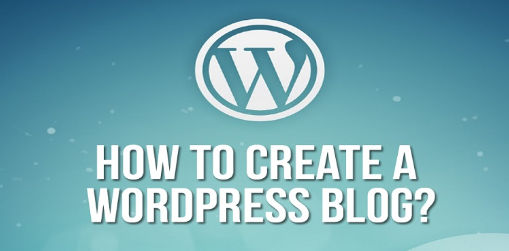Starting a blog is one of the best ways to share your ideas, build a brand, or even generate income online. Among all blogging platforms, WordPress is the most popular and powerful, powering over 40% of all websites worldwide. Whether you’re a beginner or someone switching from another platform, this guide will walk you through how to create a blog in WordPress step-by-step.
Why Choose WordPress for Blogging?
Before jumping into the steps, it’s important to understand why WordPress is the preferred choice for bloggers:
-It’s free and open-source.
-It offers full control and customization.
-Thousands of free themes and plugins.
-Strong SEO features and community support.
-Scales from simple blogs to large websites.
We’ll be using self-hosted WordPress.org, not WordPress.com, because it gives you complete ownership and flexibility.
Step 1: Choose a Domain Name and Web Hosting
The first step to creating a WordPress blog is getting a domain name (your blog’s address like mytravelblog.com) and a web hosting plan (where your website files are stored).
Tips for choosing a domain name:
-Keep it short and easy to remember.
-Avoid numbers and hyphens.
-Use keywords relevant to your niche.
-Use .com if possible.
Recommended WordPress hosting providers:
-Bluehost (officially recommended by WordPress)
-SiteGround
-Hostinger
-DreamHost
Most of these providers offer:
-One-click WordPress installation.
-Free domain for the first year.
-Affordable plans starting as low as $3/month.
-Once you’ve signed up, move on to the next step.
Step 2: Install WordPress
Most hosting services make this process easy.
One-click WordPress installation:
-Log into your hosting account dashboard (e.g., cPanel).
-Look for “WordPress” under Auto Installers.
-Select your domain and click “Install”.
-After a few minutes, your WordPress blog will be live. You can now access your WordPress admin panel at yourdomain.com/wp-admin.
Step 3: Choose a Blog Theme
A WordPress theme controls the design and layout of your blog. WordPress has thousands of free themes available in its theme directory.
How to install a theme:
-Go to your WordPress dashboard.
-Navigate to Appearance > Themes > Add New.
-Browse or search for a theme (e.g., Astra, Neve, OceanWP).
-Click Install and then Activate.
Tips for picking a blog theme:
-Make sure it’s mobile responsive.
-Choose a lightweight, fast-loading theme.
-Check ratings and recent updates.
For more customization, consider premium themes from platforms like ThemeForest, GeneratePress, or Kadence.
Step 4: Install Essential Plugins
Plugins add extra functionality to your blog. You don’t need too many—just the essentials to start.
Must-have WordPress plugins for bloggers:
Yoast SEO or Rank Math – for search engine optimization.
Jetpack – for security and performance.
WPForms – for contact forms.
Akismet – to reduce spam comments.
UpdraftPlus – to create backups.
MonsterInsights – connect Google Analytics.
To install a plugin:
Go to Plugins > Add New.
Search for the plugin name.
Click Install Now, then Activate.
Step 5: Create Your First Blog Post
Now it’s time to write and publish content.
Steps to create a blog post:
-In your dashboard, go to Posts > Add New.
-Enter a title (e.g., “My First Blog Post”).
-Use the block editor (Gutenberg) to add text, images, or videos.
-Use headings (H2, H3) for structure.
-Add a featured image.
-Assign categories and tags.
-Click Publish when ready.
Blogging tips for beginners:
-Write for your audience.
-Use short paragraphs and bullet points.
-Add internal and external links.
-Proofread before publishing.
-Be consistent with posting.
Step 6: Customize Your Blog Settings
A few small settings can improve user experience and SEO.
Go to Settings > General:
Set your site title and tagline.
Go to Settings > Permalinks:
Choose Post name for SEO-friendly URLs (e.g., yourdomain.com/my-post-title).
Customize your homepage:
Go to Appearance > Customize.
Choose whether your homepage displays latest posts or a static page.
Customize menus, colors, and widgets.
Step 7: Promote Your Blog
Once your blog is up and running, don’t forget to promote it.
Ways to promote your WordPress blog:
-Share posts on social media platforms.
-Join Facebook groups or online forums in your niche.
-Start building an email list using tools like Mailchimp.
-Collaborate with other bloggers for guest posts.
-Optimize content for SEO using keywords and meta descriptions.
-The more value you provide, the more traffic you’ll get over time.
Step 8: Make Money from Your Blog (Optional)
Once you have content and traffic, you can monetize your WordPress blog.
Common blog monetization methods:
Affiliate marketing – recommend products and earn commission.
Display ads – use Google AdSense or Ezoic.
Sponsored posts – brands pay you to write articles.
Sell digital products – eBooks, courses, templates.
Offer services – consulting, design, writing, etc.
Make sure your content remains valuable and honest, especially when monetizing.
Final Thoughts
Creating a blog in WordPress is one of the most rewarding steps you can take—whether for business, creativity, or personal growth. With the right tools, content strategy, and dedication, you can grow your blog into a successful online presence.
By following this step-by-step WordPress blog creation guide, you’ve already laid the foundation. Now, focus on content, consistency, and connecting with your readers.

